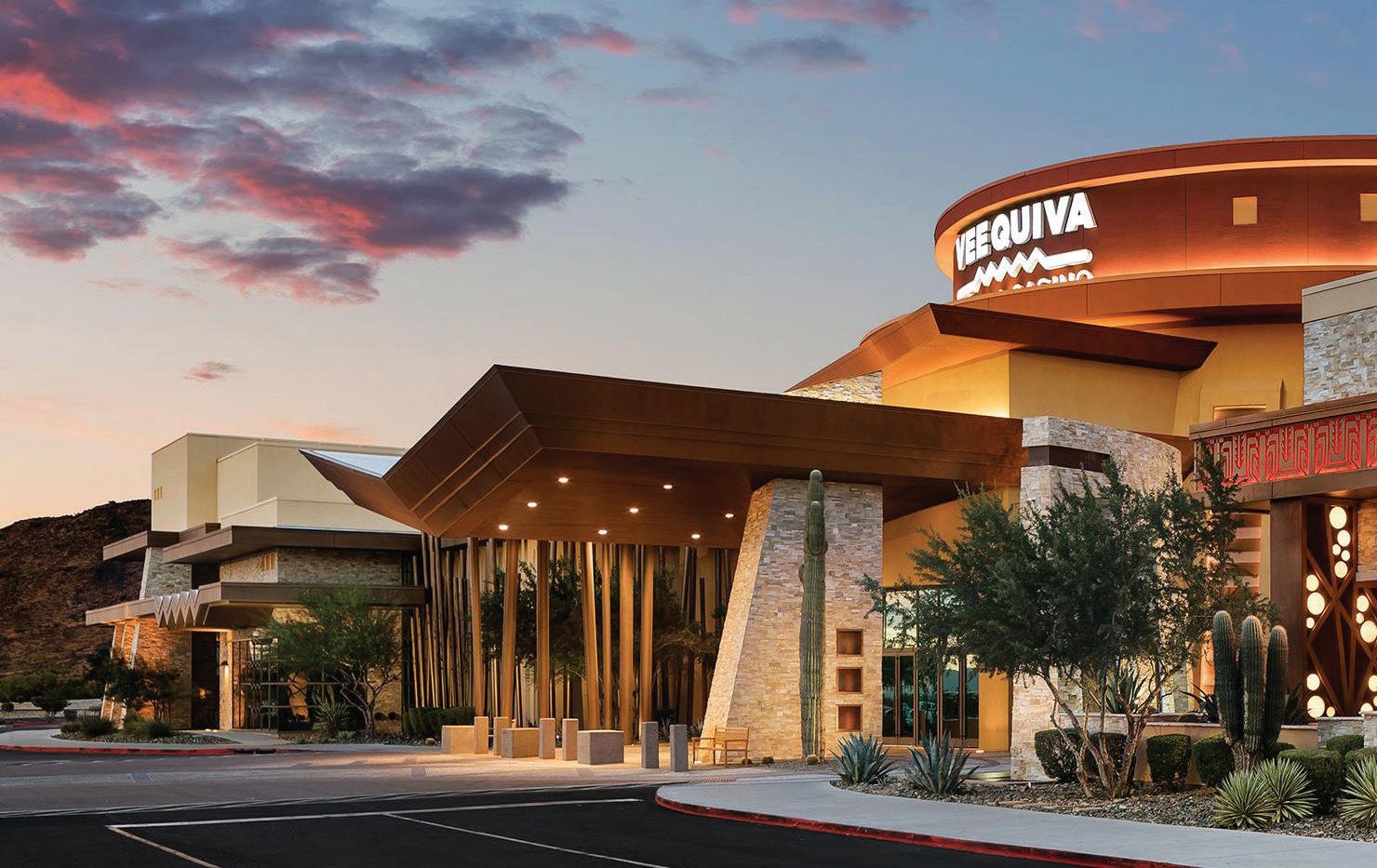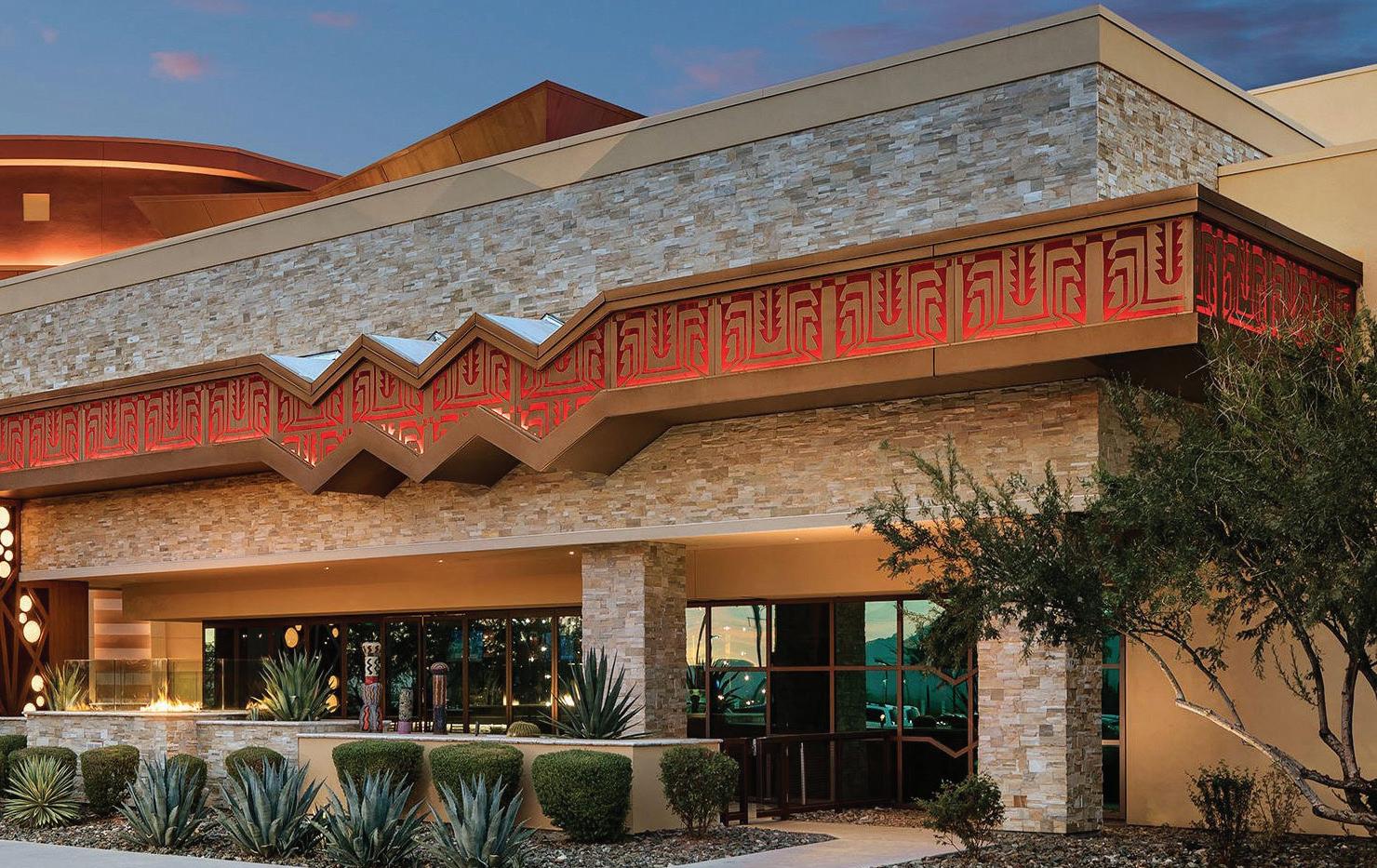
7 minute read
TRIBAL GAMING PAST AND FUTURE
Gaming America’s Cameron Saunders takes a look at the journey tribes took to become one of the most significant pillars in American gaming... and where they are going next.
It was in 1832 when the US Supreme Court granted Native American tribes the right to self-rule within the boundaries of their reservations. Control over mineral rights, hunting and fishing were the overriding concerns of the day, but in this ruling came the germ of what was to become a multi-billion-dollar industry: tribal gaming, a sterling success story for native peoples in what has otherwise been a catalogue of dislocation, horror, sorrow and poverty.
It was to escape this last affliction – the persistent poverty ubiquitous within reservation communities – that tribes began developing gambling. With this source of revenue, the reasoning went, the money could be reinvested, could benefit the people, and the cycle of poverty could be broken.
Florida’s Seminole Tribe was the first to get into the game when it began operating a bingo hall in the 1970s. But it was the landmark 1987 Supreme Court case, California vs. Cabazon Band of Mission Indians, that really laid the groundwork for rapid growth of tribal casinos across the country.
The Supreme Court, ruling in favor of the Cabazon Band of Mission Indians, harkened back to 1832: they established that, for whatever forms of gambling are allowed within a given state, a reservation
in that state will have the right to operate any of those forms of gambling unencumbered by state regulators. In other words, the tribes have the autonomy to regulate gambling on their lands so long as that type of gambling – whether bingo, roulette or slots – is permitted throughout the state.
This ruling would later be codified into law when Congress passed the Indian Gaming Regulatory Act (IGRA) in 1988. This act further stipulated that profits from the casinos must serve the welfare and economic well-being of the tribe in question. Also – in a move that would reverberate controversy through subsequent decades – the IGRA required that the relationship between tribes and state governments be subject to a gaming compact that be renewed on a rolling basis, on a timeframe varying from state to state. The rights of the reservation were now inextricably linked to whatever state it happened to be in.
With the promulgation of IGRA, the groundwork was set for a tribal gaming boom in the United States. The last three decades have seen tribal gaming emerge as one of the most dynamic sectors of the hospitality industry. Tribal casinos now dot nearly every region of the country and are lodestars of tourism and entertainment. In 1988, there were 70 Indian reservations (only 12% of the total number of reservations in the country) in 16 states offering some form of gambling. These generated a total of $100m in revenue. By 2004, revenue had skyrocketed into the billions: tribal casinos in California alone saw $4.7bn that year; in Connecticut, it was $2bn; Minnesota, $1.4bn; Arizona, $1.2bn. This spurt has continued: by 2018, the 252 tribal governments that oversee gaming operations saw a cumulative annual revenue of $33.7bn.
With this revenue come benefits for the tribal communities. Education, financial stability and health have all improved on reservations where this windfall is experienced. Community centers, places for recreation, social services and wellness programs have all been bi-products for those tribes who have successfully embraced and managed gaming. For these communities, there is the ability to be financially self-reliant in a way that was previously impossible. In this manner, tribal casinos perform a vital social function. Rates of return migration to reservations, for instance, is on the upswing for those people successfully managing this new economic fount.
But it must be remembered: tribes, reservations, and each’s approach to regulated gambling are by design disparate and not at all monolithic. Each jurisdiction has the autonomy and authority to do what they see fit for its people. Some tribes have decided not to embrace gaming at all. Of those who have, some have fared better than others, and this is for a multitude of reasons. Adding to the complexity of the state of tribal gaming are the aforementioned state compacts. With every tribe having to negotiate with the state government, some have gotten a

better deal than others. Minnesota, for instance, has a state compact that was signed in perpetuity. The tribes in that state have a relatively inviolable (the tribe would have to want to change the compact for it to be renegotiated) stake in gaming. By contrast, in Oklahoma the compact is up for renewal every 15 years. At this moment in time – as is revealed in this issue’s pages – the state’s governor has taken an abrasively contrarian stance regarding tribal rights, a move which presents unique challenges for Oklahoma’s robust tribal gaming community.
Further complicating the matter is the tide of legalization that has been sweeping over the country for the last several years. It shows no signs of abating. Indeed, it will likely become the new normal. Today we are witnessing the rise of the commercial operator, of state-sanctioned non-tribal casinos, and of a mobile betting industry where the kingpins are non-tribal operators with national reach, like FanDuel and DraftKings. These all present a formidable challenge to what has been a relatively easy rise over the last three decades. According to the American Gaming Association, tribal entities account for 45% of all gaming revenue in the nation. As the industry grows – welcoming new players and a plethora of possibilities – how could commercial operators not cut into what had once been a comparably exclusive domain for the tribes?
Some tribal players are understandably wary of these developments. In California – the nation’s single largest market by population and a state where the tribes hold a very strong hand in terms of gaming control – legal sports betting is almost certainly going to be on the ballot come November. The tribes want to keep sports betting retail; they want to keep it to the reservations. They will likely be fighting a huge campaign – tens of millions of dollars – by commercial operators who want to see the state become open to mobile sports betting.
Victor Rocha of California’s Pechanga Band of Luiseño Indians is a foot soldier in this battle, a consultant, publisher and activist working for tribal interests.
“The amount of money people are talking about makes them go insane,” he tells Gaming America.
Assuming the mantle of 500 years of indigenous history, Rocha cannot help but be cynical: “As a Native American, it’s kind of typical. Everything the Native Americans have ever had – be it the land, water, minerals – someone is always going to come and say: ‘You guys aren’t using them right, you guys aren’t exploiting
those opportunities.’”
The rise of commercial gaming is, in his view, a huge threat to the progress that tribes have made over these last few decades. These new players “have a very aggressive commercial market, and a lot of new people in the industry who don’t really have a history or who don’t really care about what came before them.”
On the other side of the debate, one could argue there are untold opportunities for tribal operators resulting from the rise of regulated gaming. In Connecticut, after mobile betting went live last October, the state compact maintained that mobile sports betting operators must act in concert with tribal casinos. Therefore, if Connecticuters are betting at a higher volume thanks to legalization, the tribe stands to benefit.
In this spirit, the tribal behemoth Mohegan Sun Gaming & Entertainment recently entered a partnership with such companies as Kambi and FanDuel, this last one being the single largest commercial operator in America. That group’s CEO, Ray Pineault, takes a decidedly pro-commercial view on tribal matters. After the 20-plus years that he has been in the industry, “tribes have become experienced at being operators and at operating in competitive environments. As good business people, we understand how to operate our entities and how to compete with these big commercial operators... Tribes are highly competitive because they do understand the business and they operate very sound businesses.”
Pineault is not wrong. There are tribes
that have become entrepreneurial to the point that they can match the reach of any commercial titan. The Seminole tribe of Florida is the most sterling example of this possibility: it bought Hard Rock International in 2006. It has a global footprint in gaming, hospitality and, indeed, mobile betting. San Manuel Band of Mission Indians is a similar story of triumph: the California tribe recently purchased the Tropicana Hotel, making it the first tribally owned casino on the Las Vegas Strip.
But these are exceptions. For every tribal entity that reaches such heights in the world of commercial gaming, there are scores of others who stay local, who rely on gaming revenue to support the life of their people, and who wish to maintain the benefits of tribal gaming. How they adapt to this fast-changing world will define the next chapter in the history of, not just tribal operators, but Native peoples in this land.











